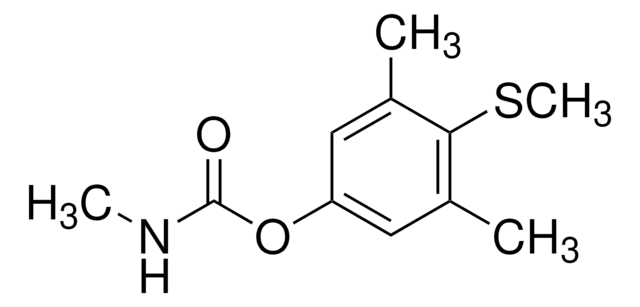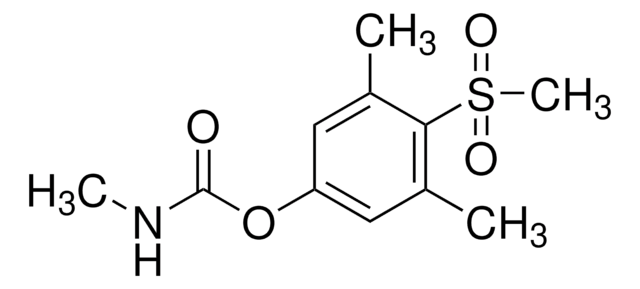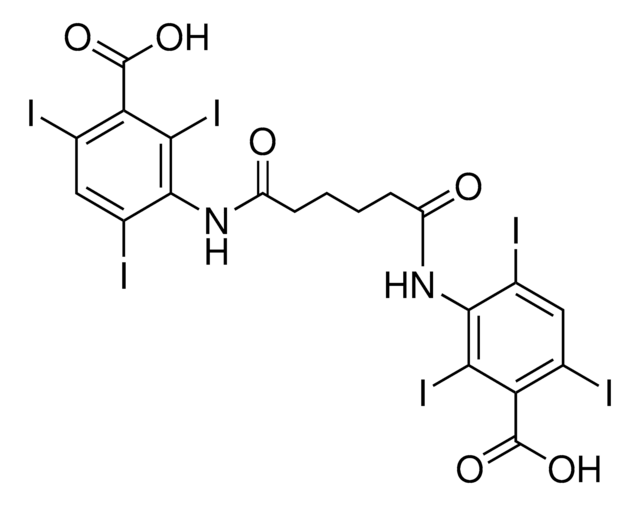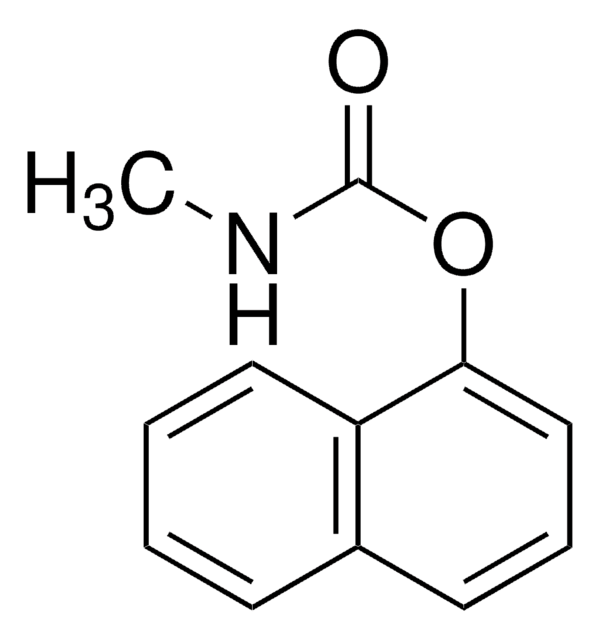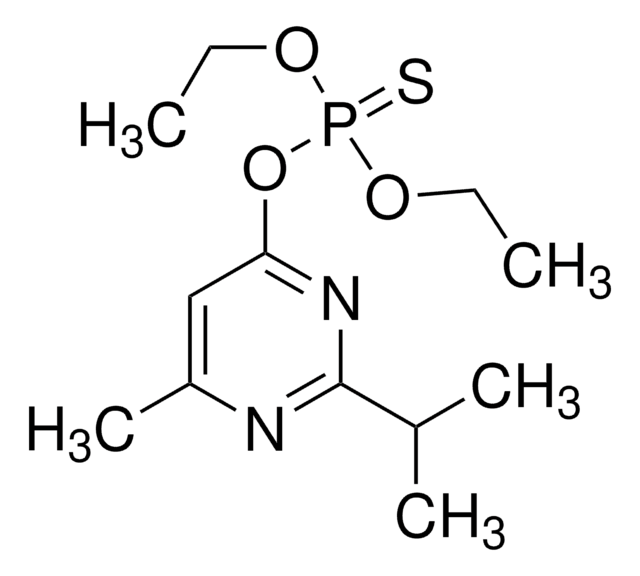31097
1-Naphthol
PESTANAL®, analytical standard
Sinônimo(s):
α-Naphthol, 1-Hydroxynaphthalene
About This Item
Produtos recomendados
grau
analytical standard
Nível de qualidade
densidade de vapor
4.5 (120 °C, vs air)
pressão de vapor
1 mmHg ( 94 °C)
linha de produto
PESTANAL®
Ensaio
≥98.0% (GC)
temperatura de autoignição
1007 °F
prazo de validade
limited shelf life, expiry date on the label
Lim. expl.
5 %
técnica(s)
HPLC: suitable
gas chromatography (GC): suitable
p.e.
278-280 °C (lit.)
pf
94-96 °C (lit.)
aplicação(ões)
forensics and toxicology
pharmaceutical (small molecule)
Formato
neat
cadeia de caracteres SMILES
Oc1cccc2ccccc12
InChI
1S/C10H8O/c11-10-7-3-5-8-4-1-2-6-9(8)10/h1-7,11H
chave InChI
KJCVRFUGPWSIIH-UHFFFAOYSA-N
Procurando produtos similares? Visita Guia de comparação de produtos
Descrição geral
Aplicação
- In human urine by a rapid and automated method based on coupled-column liquid chromatography (LC-LC) with fluorescence detection.
- In canned fruit juices by reversed-phase high performance liquid chromatography with diode-array detection.
Informações legais
Palavra indicadora
Danger
Frases de perigo
Declarações de precaução
Classificações de perigo
Acute Tox. 3 Dermal - Acute Tox. 4 Oral - Aquatic Acute 1 - Aquatic Chronic 3 - Eye Dam. 1 - Skin Irrit. 2 - Skin Sens. 1A - STOT SE 2 Oral - STOT SE 3
Órgãos-alvo
Kidney, Respiratory system
Código de classe de armazenamento
6.1C - Combustible acute toxic Cat.3 / toxic compounds or compounds which causing chronic effects
Classe de risco de água (WGK)
WGK 1
Ponto de fulgor (°F)
257.0 °F - closed cup
Ponto de fulgor (°C)
125 °C - closed cup
Equipamento de proteção individual
dust mask type N95 (US), Eyeshields, Faceshields, Gloves
Escolha uma das versões mais recentes:
Certificados de análise (COA)
Não está vendo a versão correta?
Se precisar de uma versão específica, você pode procurar um certificado específico pelo número do lote ou da remessa.
Já possui este produto?
Encontre a documentação dos produtos que você adquiriu recentemente na biblioteca de documentos.
Os clientes também visualizaram
Nossa equipe de cientistas tem experiência em todas as áreas de pesquisa, incluindo Life Sciences, ciência de materiais, síntese química, cromatografia, química analítica e muitas outras.
Entre em contato com a assistência técnica
